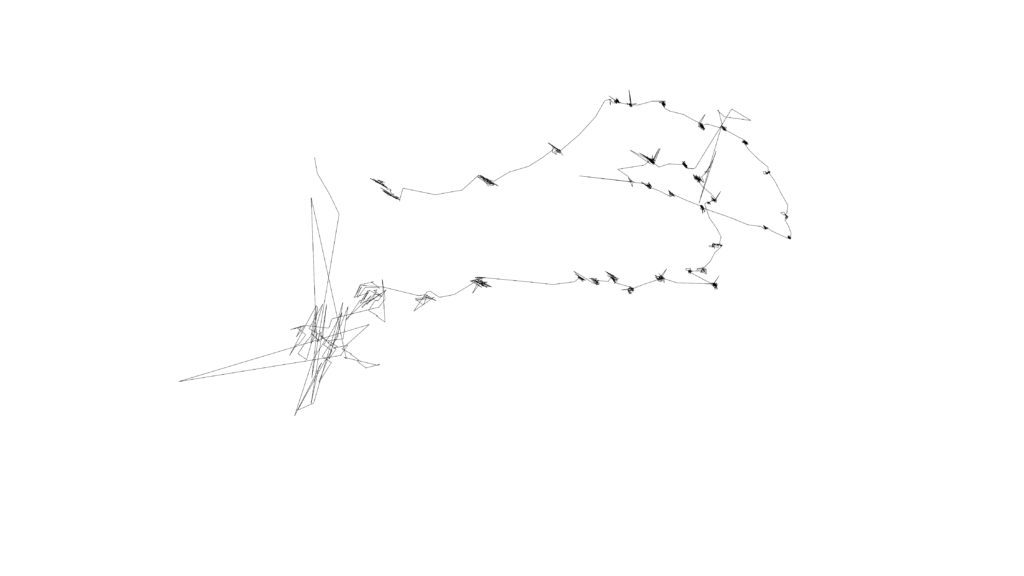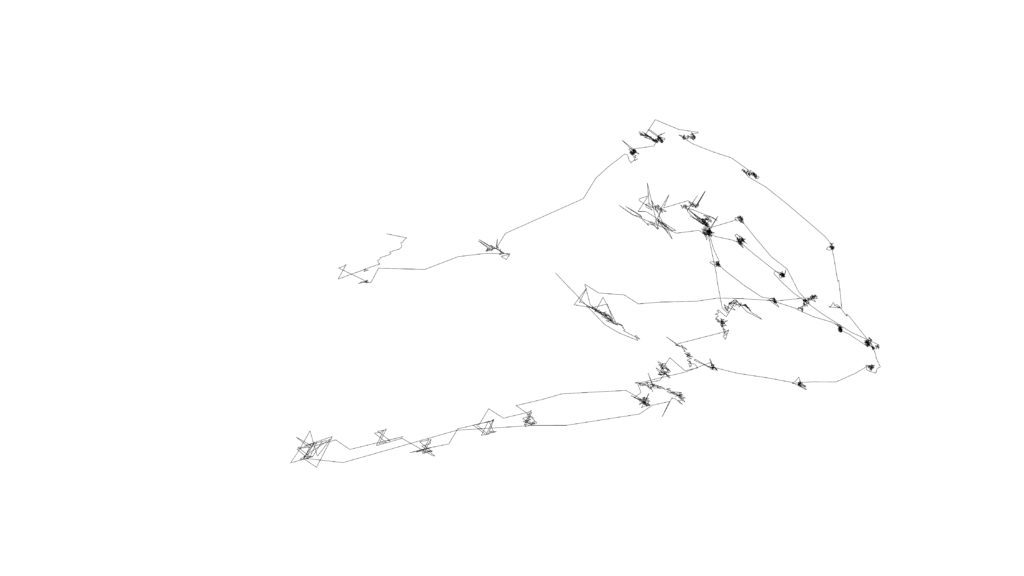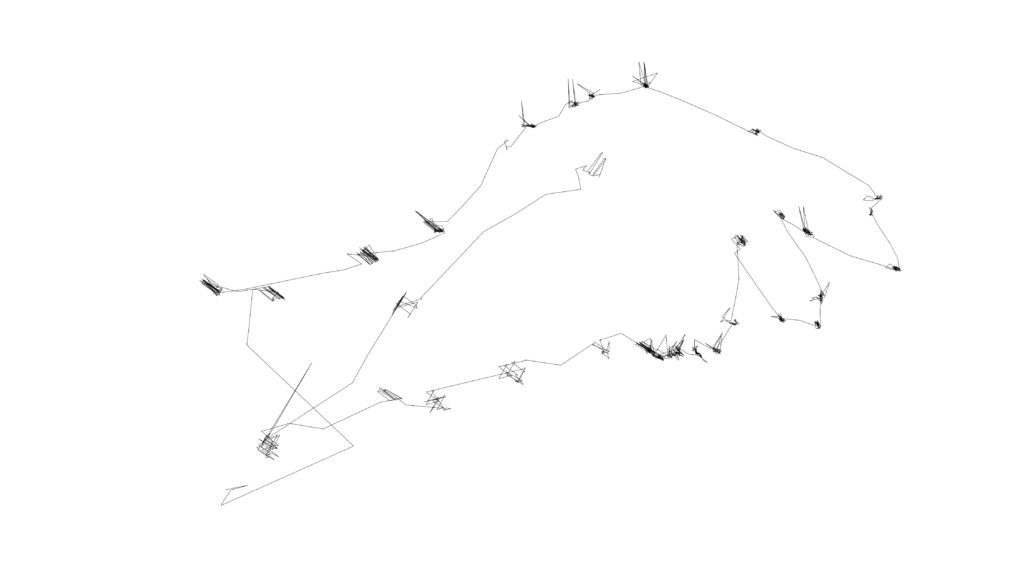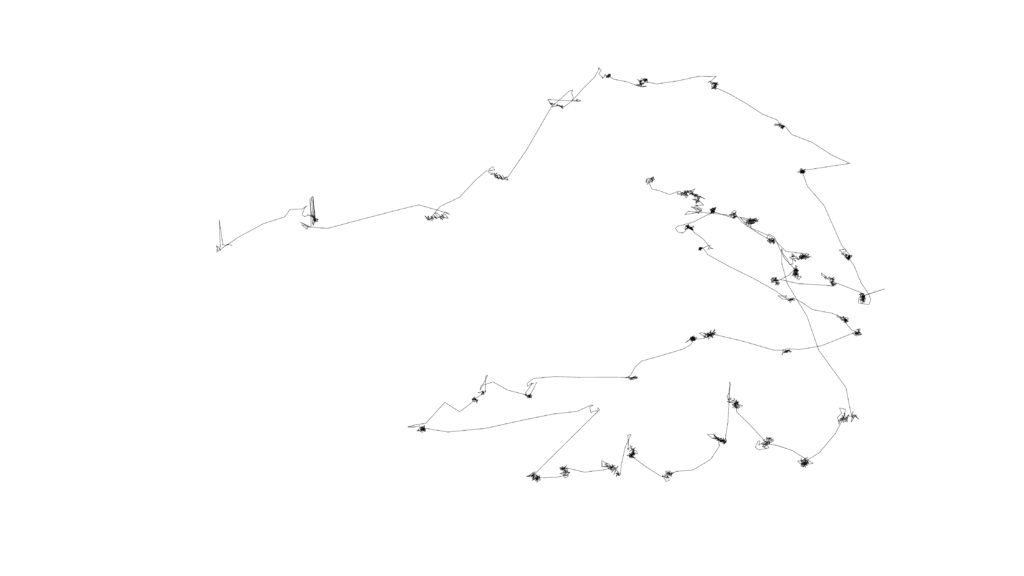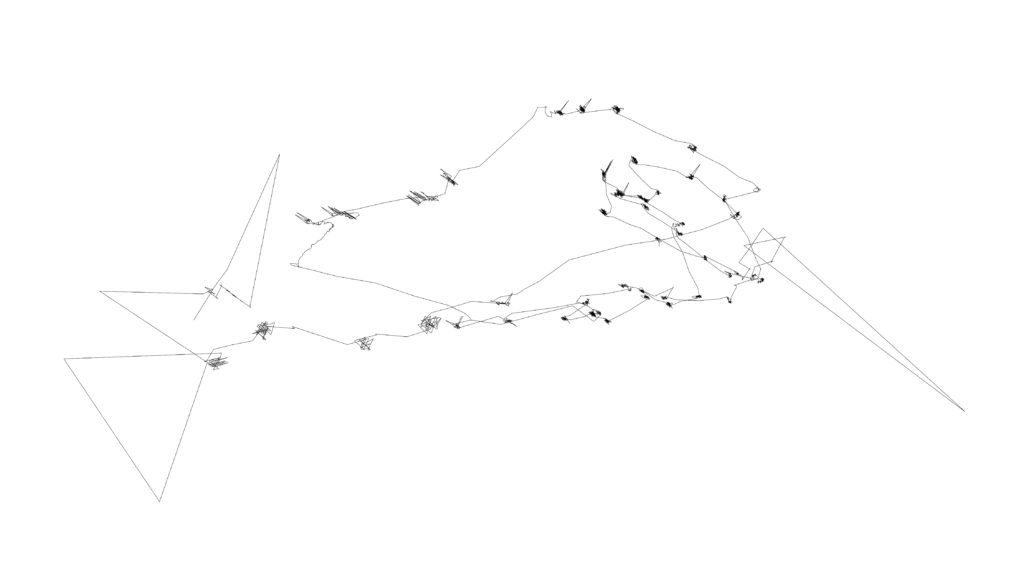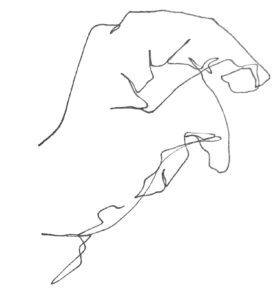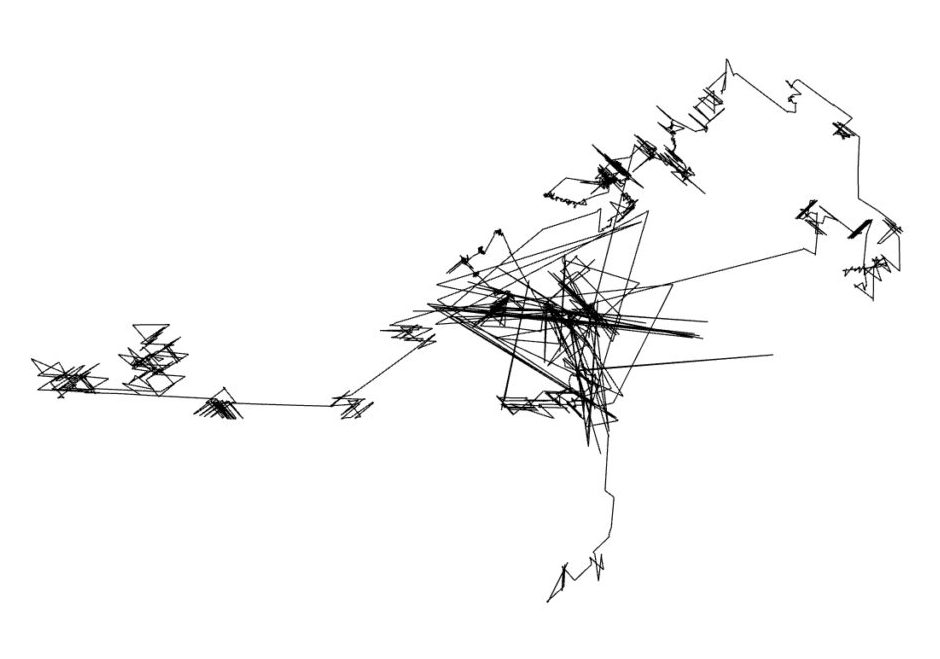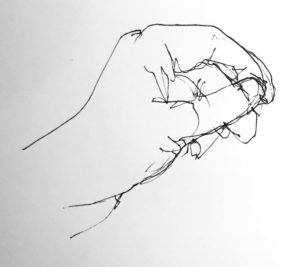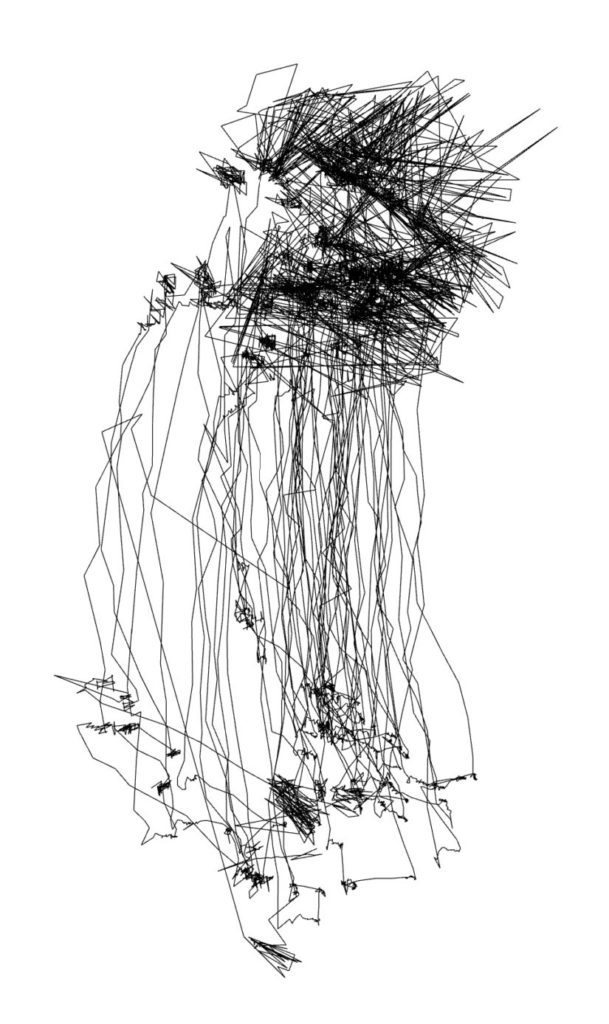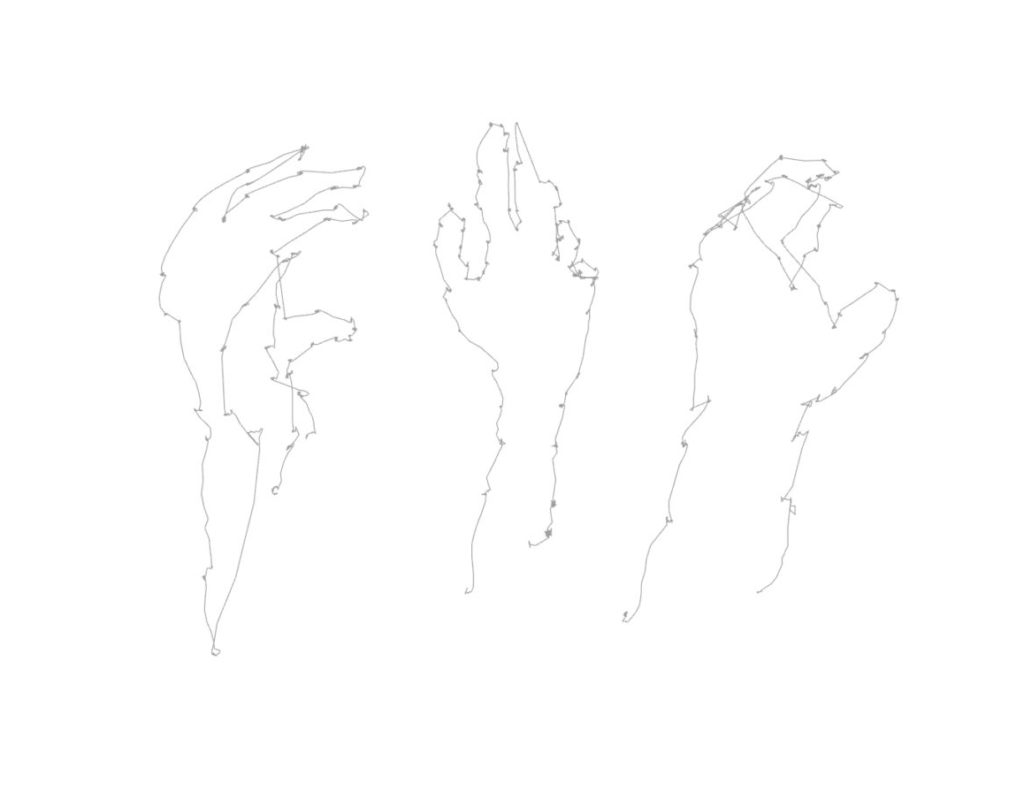
Figure 13: Three eye-drawings of the same rotating hand-gesture
After repeatedly eye-drawing my left hand from the same perspective, I tried eye-drawing my right hand from different points of view by rotating the same gesture (Figure 13 and Figure 14). The hand and drawing have a long history, and not just because of the manuality within the hand-eye coordination. The hand is the ‘skill’ and the means by which to ‘imprint’ while drawing, but it has also been regarded as one of the most difficult body parts to draw as a subject matter; not just for its anatomical rendition but also due to the cultural and symbolic values carried by its gestures. It has been therefore studied and drawn extensively (Petherbridge, 2010, pp. 251-259).
The hand carries innate verbal ways of communication, and it has been crucial in the evolutionary steps of our body, making us the humans of today (it allowed us the use of tools). The hand is also a sign of presence. Perhaps these are some of the reasons why it has been widely represented, from primitive art to contemporary times. Yet, in our daily routine we are barely aware of the hand.
It is worth mentioning that the hand has also been the vehicle with which to challenge the conventional ways of drawing (eg. automatism). While I am eye drawing, the hand is free as it is the body part which has been by-passed from the process. It is there and it can be eye-drawn. It is therefore very instinctive to do so.
__________
References:
Petherbridge, D. (2010). The Primacy of Drawing. New Haven and London: Yale University Press.

Figure 14: Three eye-drawings of the same rotating hand-gesture
